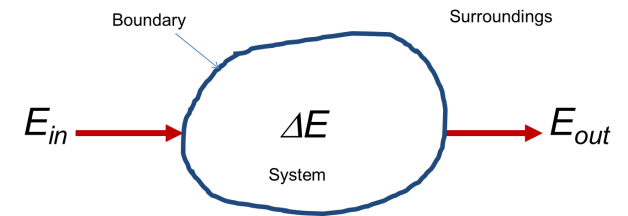A Beginner’s Guide to the First Law of Thermodynamics Applications, Energy Transfer Mechanisms and Limitations


Thermodynamics is a branch of physics that deals with the relationships between heat and other forms of energy. The first law of thermodynamics, also known as the law of conservation of energy, is one of the fundamental laws of nature. It states that energy cannot be created or destroyed but can only be transferred or converted from one form to another. This article provides an in-depth explanation of the first law of thermodynamics, its applications, energy transfer mechanisms, limitations, and real-life examples.
Introduction to the First Law of Thermodynamics
The first law of thermodynamics is based on the principle of conservation of energy, which asserts that energy cannot be created or destroyed. In other words, the total amount of energy in a closed system remains constant. Any energy that enters or leaves the system must be accounted for. The first law of thermodynamics is often expressed as:
ΔU = Q - W
where ΔU is the change in the internal energy of the system, Q is the heat added to the system, and W is the work done by the system. The first law of thermodynamics applies to all types of systems, including closed systems (systems that do not exchange matter or energy with their surroundings) and open systems (systems that exchange matter or energy with their surroundings).
Application of the First Law of Thermodynamics in Closed Systems
In a closed system, the first law of thermodynamics can be expressed as:
ΔU = Q - W
where ΔU is the change in the internal energy of the system, Q is the heat added to the system, and W is the work done by the system. If the system does no work, then W = 0, and the first law becomes:
ΔU = Q
This equation shows that any heat added to the system increases its internal energy. Conversely, if heat is removed from the system, its internal energy decreases.
Application of the First Law of Thermodynamics in Open Systems
In an open system, matter and energy can be exchanged with the environment. The first law of thermodynamics for an open system can be expressed as:
ΔH = Q - W + Δm(h + v^2/2 + gz)
where ΔH is the change in enthalpy of the system, Q is the heat added to the system, W is the work done by the system, Δm is the change in mass of the system, h is the specific enthalpy of the fluid, v is the velocity of the fluid, g is the acceleration due to gravity, and z is the height above a reference plane.
This equation shows that the change in enthalpy of an open system depends not only on the heat and work transferred but also on the change in mass and the potential and kinetic energies of the fluid.
Energy Transfer Mechanisms in the First Law of Thermodynamics
The first law of thermodynamics describes two mechanisms of energy transfer: heat and work. Heat is the energy transferred between two systems due to a temperature difference, while work is the energy transferred due to a force acting over a distance. The sign convention for heat and work is important in the first law of thermodynamics. Heat added to the system is positive, while heat removed from the system is negative. Work done by the system is positive, while work done on the system is negative.
Internal Energy and Enthalpy in the First Law of Thermodynamics
Internal energy is the total energy of the molecules in a system, including kinetic and potential energy. Enthalpy is the sum of the internal energy of the system and the product of pressure and volume. The change in enthalpy of a system is related to the heat transferred and the work done by the system.
Work and Heat Interactions in the First Law of Thermodynamics
The first law of thermodynamics describes the relationship between work and heat transfer. When work is done on a system, its internal energy increases or decreases depending on the sign of the work. When heat is added to a system, its internal energy increases, and when heat is removed from a system, its internal energy decreases.
Thermal Efficiency and the First Law of Thermodynamics
Thermal efficiency is a measure of the effectiveness of a heat engine in converting thermal energy into mechanical work. The first law of thermodynamics imposes limits on the thermal efficiency of a heat engine. The maximum thermal efficiency is given by the Carnot cycle, which is a reversible cycle that operates between two heat reservoirs.
Limitations of the First Law of Thermodynamics
The first law of thermodynamics does not provide any information about the direction of energy transfer or the spontaneity of a process. It also does not account for the irreversibility of certain processes or the quality of energy. For example, the first law cannot predict the direction of heat transfer between twoobjects with the same temperature.
Another limitation of the first law of thermodynamics is that it assumes that the internal energy of a system is a function of its state variables, such as pressure, volume, and temperature. However, some systems, such as superconductors and superfluids, exhibit behavior that cannot be explained by their state variables alone.
Examples of the First Law of Thermodynamics in Real-Life Applications
The first law of thermodynamics has many practical applications in engineering and technology. For example, it can be used to analyze the performance of heat engines, refrigeration systems, and power plants. It can also be used to model the behavior of fluids in pipes and ducts. The first law of thermodynamics is essential for understanding the fundamental principles of energy conservation and transfer.
Comparison between the First and Second Laws of Thermodynamics
While the first law of thermodynamics deals with the conservation of energy, the second law of thermodynamics deals with the direction of energy transfer and the efficiency of energy conversion. The second law states that the entropy of a closed system always increases in a spontaneous process. This law places limits on the efficiency of heat engines and other energy conversion devices.
In conclusion, the first law of thermodynamics is a fundamental principle of physics that describes the conservation of energy in closed and open systems. It provides a framework for analyzing the performance of various energy conversion devices and processes. While the first law has its limitations, it remains a powerful tool for understanding the behavior of matter and energy.
The second law of thermodynamics complements the first law by describing the direction of energy transfer and placing limitations on the efficiency of energy conversion. The second law states that the entropy of a closed system always increases in a spontaneous process, which helps explain why some processes are irreversible. By understanding both laws, scientists and engineers can better design and optimize energy systems for maximum efficiency and minimum waste.The first law of thermodynamics describes energy conservation in closed and open systems and is a fundamental principle of physics that helps analyze the performance of energy conversion devices. The second law complements the first by describing the direction of energy transfer and setting limits on efficiency, stating that entropy always increases in spontaneous processes. By understanding both laws, scientists and engineers can optimize energy systems for maximum efficiency and minimum waste.





